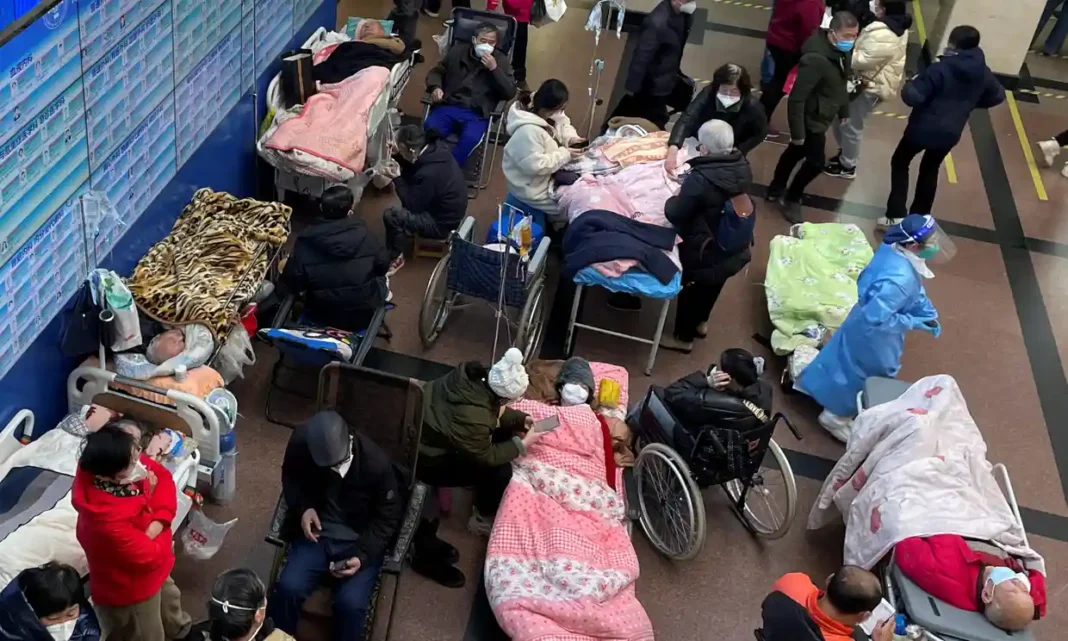The World Health Organization has criticised China’s “very narrow” definition of Covid-19 deaths, warning that official statistics are not showing the true impact of the outbreak.
There is growing concern about the steep rise in Covid infections since Beijing last month abruptly lifted years of hardline restrictions, with hospitals and crematoriums quickly overwhelmed.
“We still do not have complete data,” WHO’s emergencies director, Michael Ryan, said.
The UN agency released data provided by the Chinese Centers for Disease Control and Prevention (CDC), a day after WHO officials met Chinese scientists. China has been reporting daily Covid deaths in single figures.
“We believe that the current numbers being published from China under-represent the true impact of the disease in terms of hospital admissions, in terms of ICU admissions, and particularly in terms of deaths.”
China has recorded only 22 Covid deaths since December and has dramatically narrowed the criteria for classifying such fatalities, meaning that Beijing’s own statistics about the unprecedented wave are now widely seen as not reflecting reality.
China’s CDC analysis showed a predominance of Omicron sublineages BA.5.2 and BF.7 among locally acquired infections, according to the data reported by WHO.
Omicron remains the dominant coronavirus variant based on recent genomic sequencing, confirming what scientists had already said but allaying concerns for now about a new variant of concern emerging.
The WHO chief, Tedros Adhanom Ghebreyesus, had earlier said officials had held high-level talks with counterparts in China. “We continue to ask China for more rapid, regular, reliable data on hospitalisation and deaths, as well as more comprehensive, real-time viral sequencing,” Tedros said.
He reiterated that the UN health agency understood why some countries were introducing fresh Covid controls on visitors from China. “With circulation in China so high and comprehensive data not forthcoming … it is understandable that some countries are taking steps they believe will protect their own citizens,” he said.
The US president, Joe Biden, speaking hours after the WHO briefing, said he was concerned about how China was handling the outbreak. “They’re very sensitive … when we suggest they haven’t been that forthcoming,” he told reporters while on a visit to Kentucky.
The US, which will require negative tests from most travellers from China starting on Thursday, praised the role of the WHO and said Washington’s own precautions were because of the lack of transparency from Beijing.
The UN body was “in the best position to make an assessment” owing to its contact with Chinese officials, a state department spokesperson, Ned Price, said.
China’s foreign ministry spokesperson Mao Ning told a regular press briefing in Beijing that China had transparently and quickly shared Covid data with the WHO. Mao said that China’s “epidemic situation is controllable” and that it hoped the WHO would “uphold a scientific, objective, and impartial position”.
“Facts have proved that China has always, in accordance with the principles of legality, timeliness, openness and transparency, maintained close communication and shared relevant information and data with the WHO in a timely manner,” Mao said.
Many Chinese funeral homes and hospitals say they are overwhelmed, and international health experts predict at least 1m Covid-related deaths in China this year. Despite this, China has reported five or fewer deaths a day since the end of its zero-Covid restrictions.
“That is totally ridiculous,” 66-year-old Zhang, a Beijing resident who only gave his last name, said of the official toll. “Four of my close relatives died. That’s only from one family. I hope the government will be honest with the people and the rest of the world about what’s really happened here.”
The British-based health data firm Airfinity has estimated about 9,000 people in China are probably dying each day from Covid.
Patients at Shanghai’s Zhongshan hospital, many of them elderly, were crammed in halls on Tuesday between makeshift beds with people on oxygen ventilators and intravenous drips.
A Reuters witness counted seven hearses in the parking lot of Shanghai’s Tongji hospital on Wednesday. Workers were seen carrying at least 18 yellow bags used to move bodies.
China’s cabinet said on Wednesday it would step up medicine distribution and meet demand from medical institutions, nursing homes and rural areas, state media reported.

